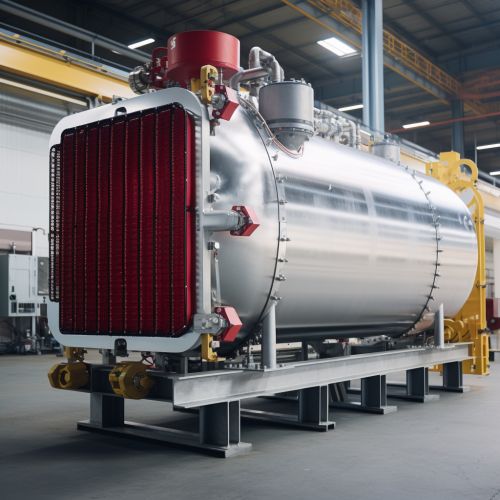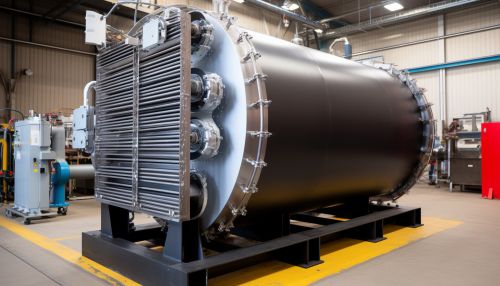Waste heat recovery
Introduction
Waste heat recovery refers to the process of capturing and reusing heat that would otherwise be lost during industrial processes. This heat, which is usually discharged into the environment, can be harnessed and used for various purposes, including heating, cooling, or electricity generation. The process of waste heat recovery is a key aspect of energy efficiency and sustainable energy practices.


Waste Heat Sources
Waste heat can be generated from a variety of sources. These include industrial processes, power generation plants, and transportation systems. The heat is usually in the form of hot exhaust gases, steam, or hot water. The temperature of the waste heat can vary greatly, from low-temperature heat (less than 100 degrees Celsius) to high-temperature heat (greater than 1000 degrees Celsius). The quality and quantity of waste heat determine its potential for recovery and reuse.
Waste Heat Recovery Methods
There are several methods for waste heat recovery, each suitable for different types of waste heat sources and applications. These methods can be broadly categorized into direct and indirect heat recovery methods.
Direct Heat Recovery
Direct heat recovery involves using the waste heat directly in the same process or transferring it to another process within the same facility. This can be achieved using heat exchangers, heat pipes, or recuperators. The recovered heat can be used for preheating raw materials, space heating, or generating steam for industrial processes.
Indirect Heat Recovery
Indirect heat recovery involves converting the waste heat into a different form of energy, usually electricity. This can be achieved using various technologies, including Organic Rankine Cycle (ORC) systems, thermoelectric generators, and Stirling engines. These technologies convert the thermal energy in the waste heat into mechanical or electrical energy.
Benefits of Waste Heat Recovery
Waste heat recovery offers several benefits. It improves energy efficiency by reducing the amount of fuel needed to generate heat or electricity. This results in lower energy costs and reduced greenhouse gas emissions. It also reduces the thermal pollution caused by the discharge of hot waste heat into the environment. Furthermore, it can improve the overall efficiency and competitiveness of industrial facilities.
Challenges and Limitations
Despite its benefits, waste heat recovery also presents several challenges and limitations. These include technical challenges related to the quality and variability of waste heat, economic challenges related to the high upfront costs of waste heat recovery systems, and regulatory challenges related to the lack of incentives and supportive policies for waste heat recovery.
Future Prospects
The future prospects for waste heat recovery are promising. Advances in technology are expected to improve the efficiency and cost-effectiveness of waste heat recovery systems. Furthermore, growing awareness about the importance of energy efficiency and sustainable energy practices is likely to drive increased adoption of waste heat recovery.
